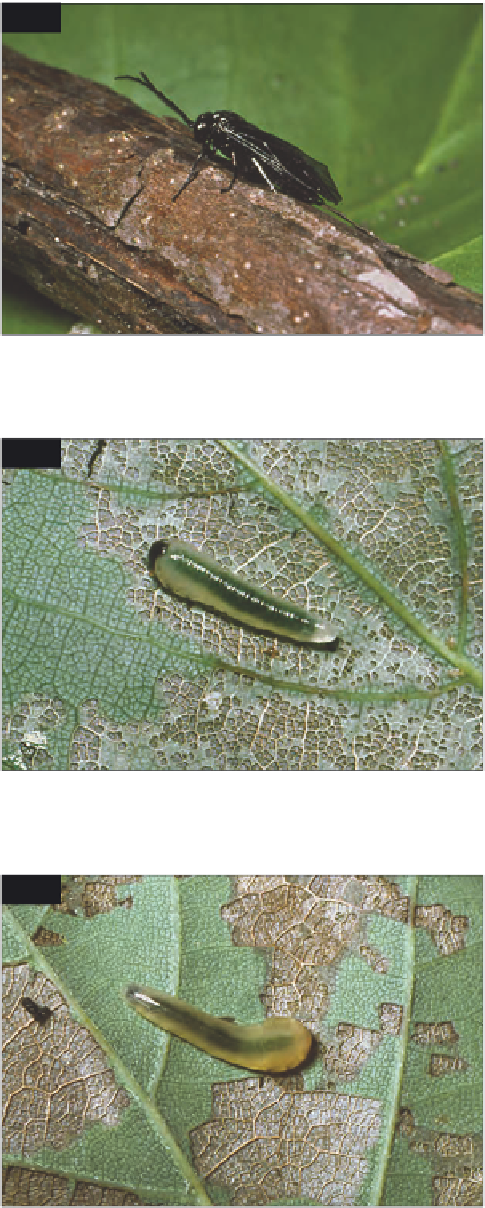Biology Reference
In-Depth Information
959
Caliroa annulipes
(Klug) (
959-961
)
Oak slug sawfly
larva
oak slugworm
A generally common pest of oak (
Quercus
); infestations
also occur on lime (
Tilia
) and, less frequently, birch
(
Betula
), beech (
Fagus sylvatica
), common sallow (
Salix
atrocinerea
), grey willow (
S. cinerea
) and other broad-
leaved willows. Widespread in central and northern
Europe.
=
DESCRIPTION
Adult:
7-8 mm long; body black; wings blackish with
an iridescent sheen, but distinctly subhyaline apically;
females with base of the hind tibiae and basitarsi white.
Larva:
up to 12 mm long; head blackish brown, with
the anterior third yellowish brown; body pear-shaped,
pale yellowish, covered in yellowish slime, shiny and
translucent; the gut contents clearly visible; young larva
whitish and translucent, with a black head.
959
Female oak slug sawfly (
Caliroa annulipes
).
960
LIFE HISTORY
Adults appear in the spring, the females depositing eggs
in the leaves of oak and other host plants. The larvae
feed in groups on the underside of the leaves during
May and June. Eventually, they enter the soil and pupate
in tough, blackish cocoons. Larvae of a second
generation feed in late July and August. In favourable
situations there may be a further generation in the
autumn.
960
Oak slugworm (
Caliroa annulipes
).
DAMAGE
Foliage is grazed from below, the upper epidermis
remaining intact but turning brownish or whitish.
Although leaves are not distorted and attacks have
little or no effect on plant growth, the presence of
damaged leaves on nursery or ornamental trees may be
undesirable.
961
961
Young oak slugworm (
Caliroa annulipes
).

Search WWH ::

Custom Search